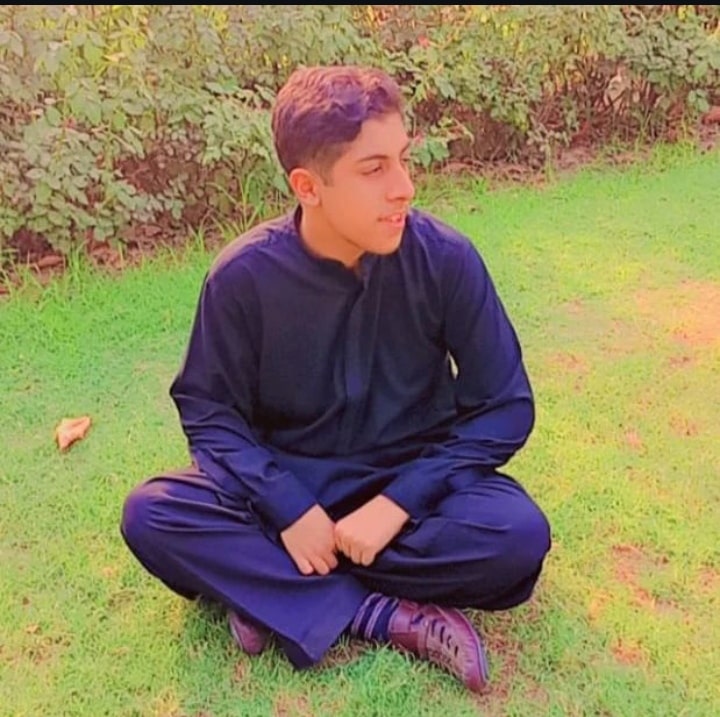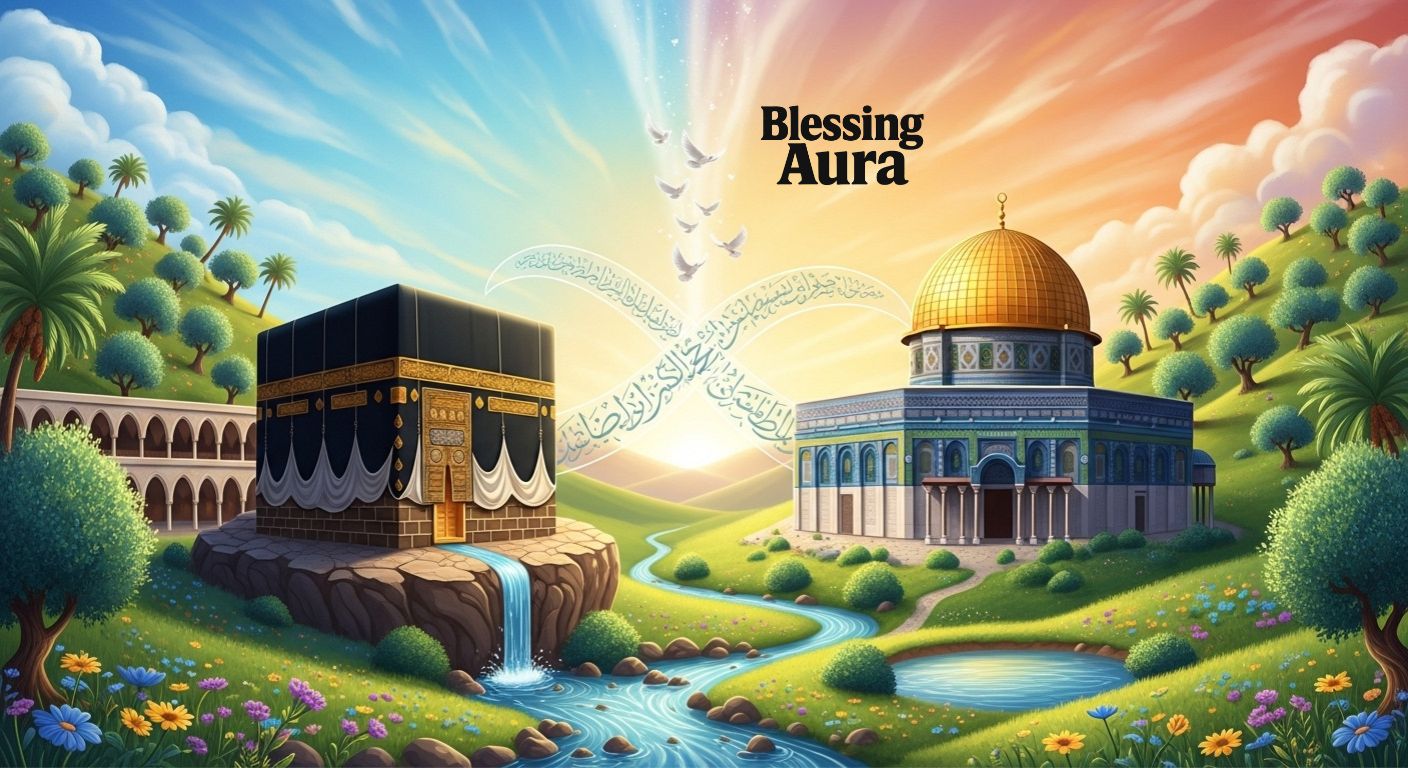The history of Two Sanctuaries that Shared Their Blessings tells the remarkable story of the Ka‘bah origins in Makkah (Mecca) and the Jewish Temple in Jerusalem. These sacred places are linked through the legacy of Prophet Abraham and his family, including Prophet Ishmael and Hagar (Hajar). For centuries, they have stood as symbols of faith, devotion, and unity among believers of the Abrahamic traditions. The First House of God in Makkah and the revered temple in Jerusalem both carry a spiritual heritage that transcends borders and time. Together, they inspire millions around the world with lessons of peace, humility, and unwavering dedication to one God.
Introduction to the Ka‘bah and Jerusalem: Two Sacred Sanctuaries
Two of the world’s holiest sites stand far apart in distance but close in spirit. The Ka‘bah origins in Makkah (Mecca) and the Jewish Temple in Jerusalem both connect to Prophet Abraham. These sacred places shaped the faith of millions over centuries. People from different lands honor them as symbols of worship to one God.
The First House of God is known in Islam as the Ancient House (Qur’an 22:29). The Jerusalem Temple, called Bayt al-Maqdis / Beit HaMiqdash, stands in Jewish history as a place of divine presence. Even today, they inspire pilgrims and spark conversations about unity of Abrahamic faiths and peace in the Holy Land.
Prophet Ishmael’s Marriages and the Foundations of the Ka‘bah
Ibn Abbas and Suddi tell of Prophet Ishmael after his mother Hagar (Hajar) passed away. He first married a woman from the Amalekites but later divorced her after a visit from Prophet Abraham. His second marriage to a woman from the Jurhum tribe linked him deeply to the people of Makkah (Mecca).
These family ties played a role in the shaping of the Ka‘bah origins. According to Ibn Kathir, this site stood as a place of worship even before humans. Later, Prophet Abraham and Prophet Ishmael rebuilt it, marking it as the First House of God and a center for faith.
The Ka‘bah: The First House of God and Its Early Construction
The Qur’an 22:26–29 recalls how God guided Prophet Abraham to raise the Ka‘bah’s walls. Ali ibn Abi Talib said that although other temples existed, this was the first built solely for God. Many call it the Ancient House (Qur’an 22:29).
Early accounts say the structure was rebuilt many times over the centuries. The table below shows a quick timeline of the Ka‘bah’s major reconstructions:
| Period | Event | Key Figures |
| Pre-Noah | Worship site for angels | Unknown |
| Abrahamic era | Rebuilt by Prophet Abraham and Prophet Ishmael | Abraham, Ishmael |
| Quraysh era | Repair and modifications | Quraysh tribe |
| Islamic era | Purification of Ka‘bah | Prophet Muhammad |
The Black Stone and Maqām Ibrāhīm: Sacred Symbols of Faith
While building the Ka‘bah, an angel brought the Black Stone to Prophet Abraham. He placed it in the eastern wall as a mark of devotion. Pilgrims today still try to touch or kiss it during Hajj rituals.
Near the Ka‘bah lies the Maqām Ibrāhīm (Station of Abraham), where he stood while raising the walls. These symbols connect millions to their shared past. They remind believers of obedience, sacrifice, and the call to pure worship.
The Origins of Hajj and the Early Pilgrimage Rites
After construction, God commanded the descendants of Prophet Ishmael to make an annual pilgrimage. This included the Korban / Qurbani and respecting the sanctuary as a place free of violence. Qur’an 22:32–33 speaks of this sacred trust.
These Hajj rituals evolved into the Islamic Origins of Hajj. Pilgrims walk around the Ka‘bah, drink from the Zam-Zam oasis, and follow steps linked to Prophet Abraham and Hagar (Hajar). This tradition spans thousands of years.
The Era of Idolatry and the Rise of Hubal in the Ka‘bah
Over time, faith shifted in Makkah (Mecca). Polytheism in Makkah brought pagan idols into the Ka‘bah. About 400 years before Islam, a king placed the Hubal idol on its roof. This red agate Hubal statue had a golden hand of Hubal and seven arrows for divination.
The Quraysh tribe became its guardians, mixing paganism with pilgrimage. Some Pre-Islamic pilgrimage practices included naked circumambulation, showing how far worship had strayed from the First House of God.
From Prophet Ishmael to the Shared Heritage of the Ka‘bah and the Jerusalem Temple
The Jewish Temple in Jerusalem, often called Solomon’s Temple, shares a spiritual link with the Ka‘bah. Prophet Solomon’s prayer in I Kings 8:41-43 asked God to welcome foreign worshippers so all nations could know His name.
These Two Sanctuaries became markers of divine unity. One stood in Hijaz, the other in Israel. Together they tell the story of faith’s journey across lands and generations.
Pilgrimage, Peace, and Unity in Jerusalem
Biblical prophecy (Isaiah, Zechariah) speaks of a time when all nations will come in peace. Zachariah 14:16 mentions Haj Sukkot, a Jewish festival of pilgrimage. Isaiah 19:23-25 envisions Egypt, Assyria, and Israel worshipping together.
This vision of peace in the Holy Land reflects the dream of united worship. It’s a hope shared by many in the USA who see Jerusalem as a bridge, not a barrier.
The Present-Day Significance of Both Sacred Sites
Today the Ka‘bah draws millions during Hajj rituals. It remains the spiritual heart of Islam. Jerusalem, with its Holy Temple ruins, still draws pilgrims and scholars from all over the world.
In modern times, both sanctuaries spark talks about coexistence. They serve as reminders that faith, when true to its roots, unites instead of divides.
Spiritual Lessons from the Ka‘bah and Jerusalem
These sites teach humility, service, and the value of sacred trust. From the Temple incense in Jerusalem to the water of the Zam-Zam oasis in Makkah, each carries stories of devotion. Jerusalem pilgrimage miracles remind us that divine presence transforms hearts.
The unity of Abrahamic faiths is more than history—it’s a living call to respect one another. These sanctuaries still share their blessings with those who seek truth and peace.
FAQ’s
What does Two Sanctuaries that Shared Their Blessings mean in history?
Two Sanctuaries that Shared Their Blessings refers to the Ka‘bah in Makkah and the Jerusalem Temple, two holy sites linked by shared Abrahamic traditions and divine heritage.
How are the Two Sanctuaries that Shared Their Blessings connected in faith?
The Two Sanctuaries that Shared Their Blessings connect through Prophet Abraham’s legacy, serving as symbols of monotheism, unity, and devotion in Islam, Judaism, and Christianity across centuries.
Who built the Two Sanctuaries that Shared Their Blessings according to tradition?
According to tradition, the Two Sanctuaries that Shared Their Blessings were built by Prophet Abraham and his descendants, including Prophet Ishmael and Prophet Solomon, as places dedicated solely to God.
Why do believers visit the Two Sanctuaries that Shared Their Blessings?
Believers visit the Two Sanctuaries that Shared Their Blessings to honor their faith, fulfill religious pilgrimages, and connect with the spiritual history rooted in the Abrahamic heritage.
What lessons come from the Two Sanctuaries that Shared Their Blessings?
The Two Sanctuaries that Shared Their Blessings teach lessons of peace, humility, and unity, reminding all faiths of their common spiritual roots and the call to worship one God.
Conclusion
The story of Two Sanctuaries that Shared Their Blessings shows a deep spiritual link between the Ka‘bah and the Jerusalem Temple. Both stand as symbols of faith and unity. The Two Sanctuaries that Shared Their Blessings connect people across different religions. They remind us of the shared history of Prophet Abraham and his family. These places have seen worship, trials, and renewal through time. The Two Sanctuaries that Shared Their Blessings are more than buildings. They are living signs of devotion.
In today’s world, the Two Sanctuaries that Shared Their Blessings still inspire millions. They call for peace between nations and faiths. Pilgrims travel far to see them. The Two Sanctuaries that Shared Their Blessings teach humility and respect. They carry lessons from the past into the future. The Two Sanctuaries that Shared Their Blessings remind us to stay united in worshipping one God.

Welcome to Blessing Aura! I’m Muhammad Anas, an Digital Marketer and Ebay Dropshipping Expert with 1 year of experience, I help business, brands and store to grow online. My goal is to run ads and sell effective products for everyone, Let’s achieve more together!

